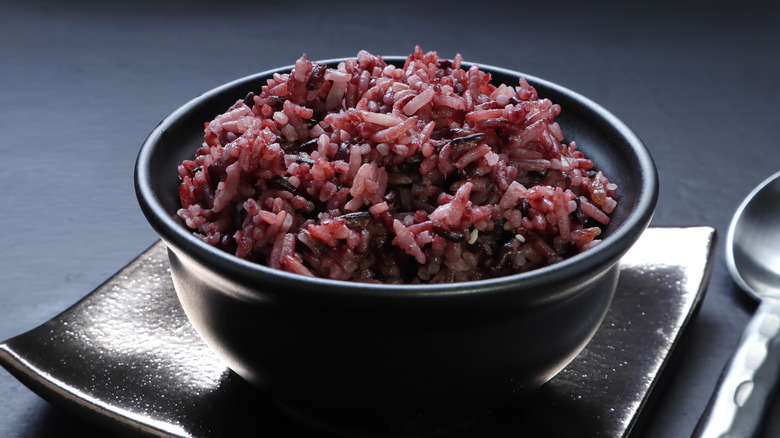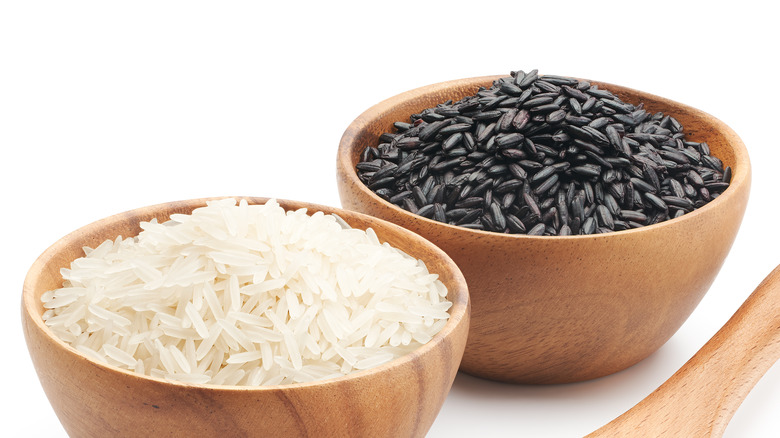What Gives Purple Rice Its Signature Bright Violet Color?
If you've ever seen or had purple rice, you probably wondered what grain it was made from. Known to be more healthy and rich in antioxidants than white rice, purple rice is both an aesthetically attractive and nutritionally beneficial grain option.
Purple rice is most commonly seen in Southeast and East Asian cuisine, including Filipino, Thai, Korean, and Chinese. At times, Thai mango sticky rice happens to have deep purple, almost black hue, which is purple rice. You could also find a rounded dome of light lavender-toned rice in the metal rice bowl at a Korean BBQ restaurant.
Most bowls of purple rice have different hues of purple, ranging from lavender to deep purple. But purple rice doesn't come in different colors like packets of heirloom tomatoes or wild rice. Something not many people know is that the grains themselves aren't purple before being cooked. So the mystery is, indeed, where does purple rice get its color?
Black rice and white rice makes purple rice
You'll be surprised to know that most purple rice dishes are made up of a mixture of white rice and black rice, also known as forbidden rice. Black rice got its forbidden status because it was deemed as one of the most nutrient-dense, healthiest grain options available, meaning that only emperors could enjoy the delicacy. As you cook the white rice with the black rice, the deep purple tone of the black rice bleeds throughout the entire mixture, leaving behind a beautiful array of purple-colored grains.
Most steamed purple rice recipes have greater quantities of white rice than black rice. The intensity of the color is comes from the ratio of black rice to white rice: The more black rice you add, the deeper the color of the rice. While Thai sticky rice calls for a 1:3 ratio of black rice to white rice, Korean purple rice requires 1 tablespoon of black rice for 2 cups of white rice. You'll find this to be great news, considering that black rice is more expensive due to how difficult it is to cultivate. As long as you have a supply of white rice, you can easily make many batches of purple rice with just one bag of black rice.
Try incorporating this type of rice in your next rice dish for a beautiful violet color.

